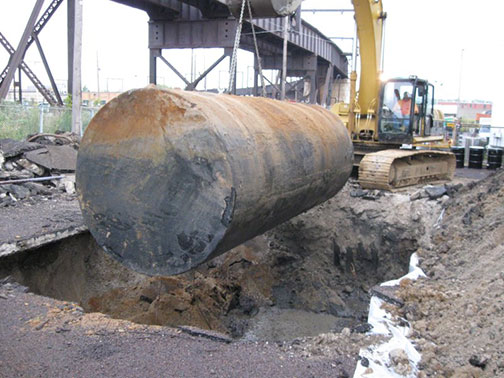
Due to recent litigation regarding the United States Environmental Protection Agency (USEPA) revised Underground Storage Tank (UST) regulations we want to update and remind our clients about the regulations that went into effect on October 13, 2015. The changes represent the first revisions to USEPA UST rules since they were enacted in 1988, and apply to tanks that hold petroleum or hazardous chemicals.
Some changes go into effect on October 13, 2018; however, some specific changes were set to go into effect immediately. These changes will affect some installations, repairs, and reporting requirements at current UST facilities.
What Are the Changes?
Some changes currently in effect:
- Ball float valves replacements must be with an automatic shut off flapper valve or an overfill alarm system.
- Operators must notify the regulatory agency at least 30 days in advance of switching to blended fuels containing greater than 10% ethanol, greater than 20% biodiesel, or when compatibility can be an issue for other regulated substances.
Some changes with an implementation date of October 13, 2018:
- Monthly walk through inspections of UST facilities must be performed. Currently the rule allows for quarterly inspections.
- Spill bucket testing for tank tightness at three year intervals (not previously required).
- Inspection of overfill prevention equipment at three year intervals.
- Training of UST Operators into A/B and C classes.
What Does This Mean for Illinois UST Operators?
 Illinois UST operators will have to follow both the current Illinois regulations and the USEPA regulations until the Illinois regulations are updated. These updates are in progress at the Illinois Office of the State Fire Marshal (OSFM) and are expected to have the same deadlines as the USEPA.
Illinois UST operators will have to follow both the current Illinois regulations and the USEPA regulations until the Illinois regulations are updated. These updates are in progress at the Illinois Office of the State Fire Marshal (OSFM) and are expected to have the same deadlines as the USEPA.
Also in Illinois, enforcement of the existing operator requirements has changed. A new Notice of Violation (NOV) for specific Operator Certification deficiencies began being issued on April 1, 2016. Instead of the 60 day compliance period that was previously allowed for correcting violations, this new Operator Certification NOV will lead to immediate red tagging of USTs at the facility when any of the listed violations are found. According to the OSFM, UST NOVs will continue to have a 60 day compliance period.
How About Missouri UST Operators?
Missouri’s UST regulatory program has “State Program Approval” from the USEPA, which allows the state to continue to use its own regulations as long as it updates the regulations and obtains approval by the USEPA within three years of the new USEPA regulation.
Currently, Missouri is in the preliminary stages of the rulemaking process, and USEPA rules are not in force. However, the proposed Rule Changes are being provided to the public in the following document: Proposed Changes to Missouri UST Regulations. Details of some of these proposed changes are also provided in its most recent newsletter: August 2015 MDNR UST Newsletter.
Ask Us If You Have Any Questions!
The first step in compliance is understanding the rules and regulations. Geotechnology continues to monitor these technical and regulatory changes on behalf of our clients. For a more detailed explanation of the USEPA rule changes and how they are different from the 1988 rules you can contact us or visit https://www.epa.gov/sites/production/files/2015-07/documents/regs2015-crosswalk.pdf.
